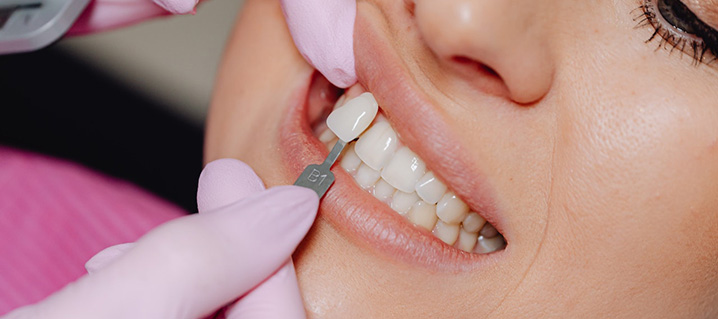How do dentists diagnose periodontal disease?
24 Nov 2023
5 min read
By Dr. Azim Malik
Specialist Periodontist and ImplantSurgeon
SIGNS AND SYMPTOMS OF PERIODONTAL DISEASE
There are two common visual tools usedto diagnose periodontal disease.
There is a visual examination, which is where we will look at a patient and wewill most likely be able to tell if they have, for example, gum recession orgaps in between the teeth – or teeth that look long, red, inflamed, puffy…
These are signs the patient has gum disease.
And then there is the actual clinical assessment.
The best method to detect periodontal disease
This means sticking a probe, which is like a little tiny stick, in the junctionbetween the tooth and the gum – and seeing how far down it goes.
The further down it goes, the worse the patient’s disease.
So anywhere up to 4mm is normal and acceptable.
Anything more than that is a sign that something needs to be done because thepatient has active gum disease.
So that’s a clinical examination.
What are the signs of periodontal disease?
Also, if you get any bleeding or puss coming out from your gums, again, that'sa sign you have gum disease.
And then last but not least, in addition to all of this, we take x-rays.
X-rays will definitely confirm to us whether the patient has gum disease or notbecause they will lose bone.
With x-rays, we can see where the position of the bone is in relation to thetooth.
The lower the level of the bone, the worse the patient’s disease.
DIAGNOSIS AND ASSESSMENT OF PERIODONTAL DISEASE
The diagnosis and assessment has largely remained the same over the years.
Some new diagnostic tools have been developed but they’re mostly used inresearch settings rather than in the chair.
I don't expect any of the technologies we use to be changing because they'requite simple and effective when it comes to making a diagnosis.
The only thing we hope is we can find a better way to manage the disease.
Managing periodontal disease
There are a lot of links being found between gum disease and heart disease, gumdisease and Alzheimer's – and other conditions including arthritis.
And that all makes sense – we can't say one causes the other but they certainlyhave a relationship.
So, for example, we know for a fact that if you have uncontrolled diabetes,it’s very likely it will make an impact on you – or have a negative effect – ifyou have gum disease.
They go hand in hand.
But when it comes to managing the disease, I don’t think there have been anygroundbreaking breakthroughs yet.


